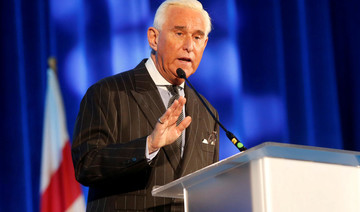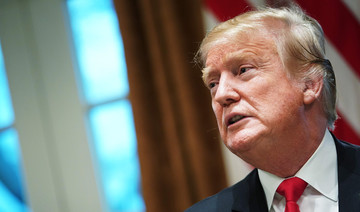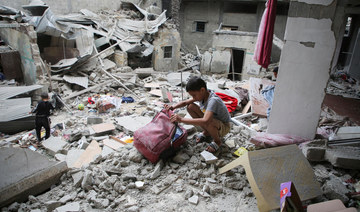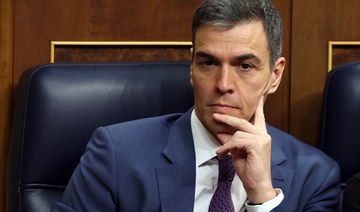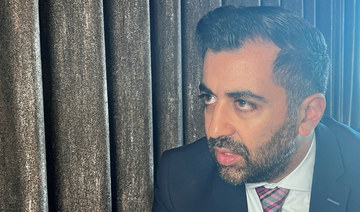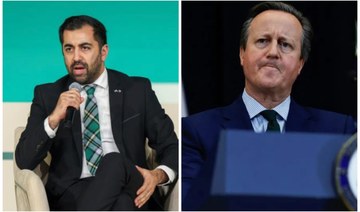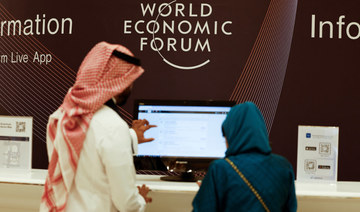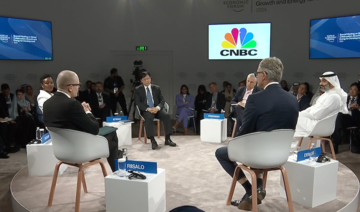WASHINGTON: Submitting to mounting pressure amid growing disruption, President Donald Trump agreed to a deal Friday to reopen the government for three weeks, backing down from his demand that Congress give him money for his border wall before federal agencies get back to work.
Standing alone in the Rose Garden, Trump said he would sign legislation funding shuttered agencies until Feb. 15 and try again to persuade lawmakers to finance his long-sought wall. The deal he reached with congressional leaders contains no new money for the wall but ends the longest shutdown in US history.
First the Senate, then the House swiftly and unanimously approved the deal, sending the legislation to Trump for his signature.
Trump’s retreat came in the 35th day of the partial shutdown as intensifying delays at the nation’s airports and another missed payday for hundreds of thousands of federal workers brought new urgency to efforts to resolve the standoff.
“This was in no way a concession,” Trump said in a tweet late Friday, fending off critics who wanted him to keep fighting. “It was taking care of millions of people who were getting badly hurt by the Shutdown with the understanding that in 21 days, if no deal is done, it’s off to the races!“
The shutdown was ending as Democratic leaders had insisted it must — reopen the government first, then talk border security.
“The president thought he could crack Democrats, and he didn’t, and I hope it’s a lesson for him,” said the Senate Democratic leader, Chuck Schumer. House Speaker Nancy Pelosi said of her members: “Our unity is our power. And that is what maybe the president underestimated.”
Trump still made the case for a border wall and maintained he might again shut down the government over it. Yet, as negotiations restart, Trump enters them from a weakened position. A strong majority of Americans blamed him for the standoff and rejected his arguments for a border wall, recent polls show.
“If we don’t get a fair deal from Congress, the government will either shut down on Feb. 15, again, or I will use the powers afforded to me under the laws and Constitution of the United States to address this emergency,” Trump said.
The president has said he could declare a national emergency to fund the border wall unilaterally if Congress doesn’t provide the money. Such a move would almost certainly face legal hurdles.
As part of the deal with congressional leaders, a bipartisan committee of House and Senate lawmakers was being formed to consider border spending as part of the legislative process in the weeks ahead.
“They are willing to put partisanship aside, I think, and put the security of the American people first,” Trump said. He asserted that a “barrier or walls will be an important part of the solution.”
The deal includes back pay for some 800,000 federal workers who have gone without paychecks. The Trump administration promises to pay them as soon as possible.
Also expected is a new date for the president to deliver his State of the Union address, postponed during the shutdown. But it will not be Jan. 29 as once planned, according to a person familiar with the planning but unauthorized to discuss it.
As border talks resume, Senate Majority Leader Mitch McConnell said he hopes there will be “good-faith negotiations over the next three weeks to try to resolve our differences.”
Schumer said that while Democrats oppose the wall money, they agree on other ways to secure the border “and that bodes well for coming to an eventual agreement.”
In striking the accord, Trump risks backlash from conservatives who pushed him to keep fighting for the wall. Some lashed out Friday for his having yielded, for now, on his signature campaign promise.
Conservative commentator Ann Coulter suggested on Twitter that she views Trump as “the biggest wimp” to serve as president.
Money for the wall is not at all guaranteed, as Democrats have held united against building a structure as Trump once envisioned, preferring other types of border technology. Asked about Trump’s wall, Pelosi, who has said repeatedly she won’t approve money for it, said: “Have I not been clear? No, I have been very clear.”
Within the White House, there was broad recognition among Trump’s aides that the shutdown pressure was growing, and they couldn’t keep the standoff going indefinitely. The president’s approval numbers had suffered during the impasse. Overnight and Friday, several Republicans were calling on him openly, and in private, to reopen the government.
The breakthrough came as LaGuardia Airport in New York and Newark Liberty International Airport in New Jersey both experienced at least 90-minute delays in takeoffs Friday because of the shutdown. And the world’s busiest airport — Hartsfield-Jackson Atlanta International Airport — was experiencing long security wait times, a warning sign the week before it expects 150,000 out-of-town visitors for the Super Bowl.
The standoff became so severe that, as the Senate opened with prayer, Chaplain Barry Black called on high powers in the “hour of national turmoil” to help senators do “what is right.”
Senators were talking with increased urgency after Thursday’s defeat of competing proposals from Trump and the Democrats. Bipartisan talks provided a glimmer of hope Friday that some agreement could be reached. But several senators said they didn’t know what to expect as they arrived to watch the president’s televised address from their lunchroom off the Senate floor.
The Senate first rejected a Republican plan Thursday reopening the government through September and giving Trump the $5.7 billion he’s demanded for building segments of that wall, a project that he’d long promised Mexico would finance. The 50-47 vote for the measure fell 10 shy of the 60 votes needed to succeed.
Minutes later, senators voted 52-44 for a Democratic alternative that sought to open padlocked agencies through Feb. 8 with no wall money. That was eight votes short. But it earned more support than Trump’s plan, even though Republicans control the chamber 53-47. It was aimed at giving bargainers time to seek an accord while getting paychecks to government workers who are either working without pay or being forced to stay home.
Contributing to the pressure on lawmakers to find a solution was the harsh reality confronting many of the federal workers, who on Friday faced a second two-week payday with no paychecks.
Throughout, the two sides issued mutually exclusive demands that have blocked negotiations from even starting: Trump had refused to reopen government until Congress gave him the wall money, and congressional Democrats had rejected bargaining until he reopened government.
Trump’s retreat: Shutdown ends without wall money, for now
Trump’s retreat: Shutdown ends without wall money, for now
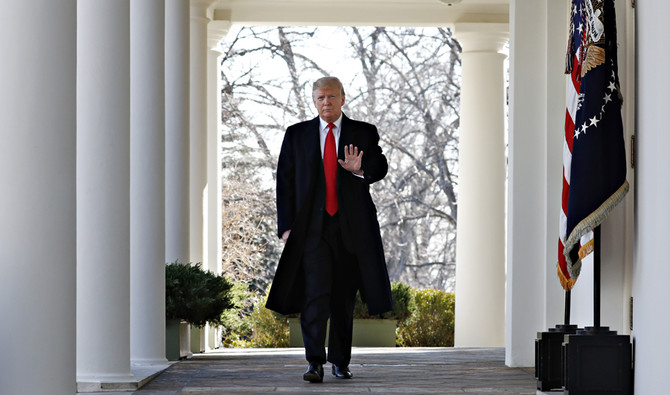
- Trump’s retreat came in the 35th day of the partial shutdown as intensifying delays at the nation’s airports and another missed payday for hundreds of thousands of federal workers
Iran slams crackdown on US student protesters

- The demonstrations began at Columbia University in New York and have since spread across the country
Tehran: Iran on Monday criticized a police crackdown in the United States against university students protesting against the rising death toll from the Israel-Hamas war in the Gaza Strip.
“The American government has practically ignored its human rights obligations and respect for the principles of democracy that they profess,” foreign ministry spokesman Nasser Kanani said.
Tehran “does not at all accept the violent police and military behavior aimed at the academic atmosphere and student demands,” he said.
American universities have been rocked by pro-Palestinian demonstrations, triggering campus clashes with police and the arrest of some 275 people over the weekend.
The demonstrations began at Columbia University in New York and have since spread across the country.
In Iran, hundreds of people demonstrated in Tehran and other cities on Sunday in solidarity with the US demonstrations.
Some carried banners proclaiming “Death to Israel” and “Gazans are truly oppressed,” state media reported.
The Gaza war broke out after the October 7 attack by Palestinian militants on Israel which killed 1,170 people, mostly civilians, according to Israeli figures.
Tehran backs Hamas, but has denied any direct involvement in the attack.
Israel’s retaliatory offensive against Hamas has since killed at least 34,488 people in Gaza, mostly women and children, according to the Hamas-run territory’s health ministry.
“What we have seen in American universities in recent days is an awakening of the world community and world public opinion toward the Palestinian issue,” Kanani said.
“It is not possible to silence the loud voices of protesters against this crime and genocide through police action and violent policies.”
Pedro Sanchez stays on as Spain’s prime minister after weighing exit
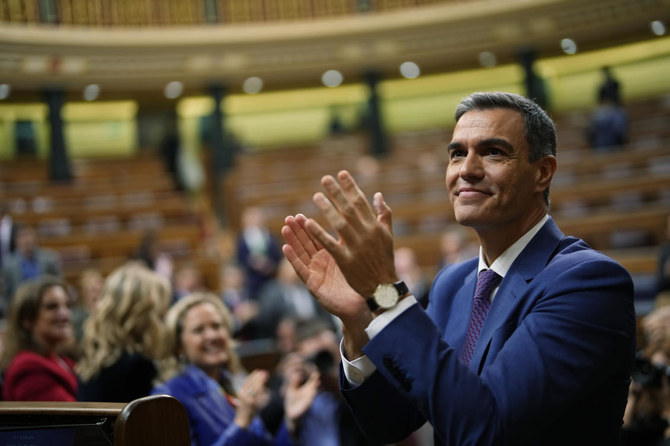
- Sanchez had surprised foes and allies when earlier said he considers quitting
- He described the court investigation of his wife Begona Gomez for influence peddling and business corruption as orchestrated by his opponents
MADRID: Spain’s Prime Minister Pedro Sanchez said on Monday he had decided to continue in office, days after abruptly announcing he was considering his future following the launch of a corruption investigation against his wife.
The center-left prime minister, 52, had surprised foes and allies alike when he said on Wednesday he was taking time from public duty to consider quitting. He described the court investigation of his wife Begona Gomez for influence peddling and business corruption as orchestrated by his opponents.
Sanchez met King Felipe VI on Monday — a step that would have been necessary should he have decided to resign — but announced in a televised address that he had informed the monarch of his decision to stay on. He had been encouraged to stay by widespread expressions of support over the weekend, Sanchez said.
“I have decided to go on, if possible even stronger as prime minister. This is not business as usual, things are going to be different,” he said in a national broadcast.
His announcement that he might quit had caused further turmoil in Spanish politics, where a fractious parliament has struggled to form coalition governments after close elections. Should a new election have been required, it would have been the fourth in five years.
The opposition will try to exploit the sign of indecision from Sanchez, but the impact may be limited because Spain’s political landscape is already so polarized, said Ignacio Jurado, political science professor at Madrid’s Carlos III University.
“His credibility is already hotly contested and voters have already given it to him or taken it away,” he said. “As a leader he has shown a weakness and it’s something that the opposition will exploit a lot.”
Scottish First Minister Humza Yousaf resigns
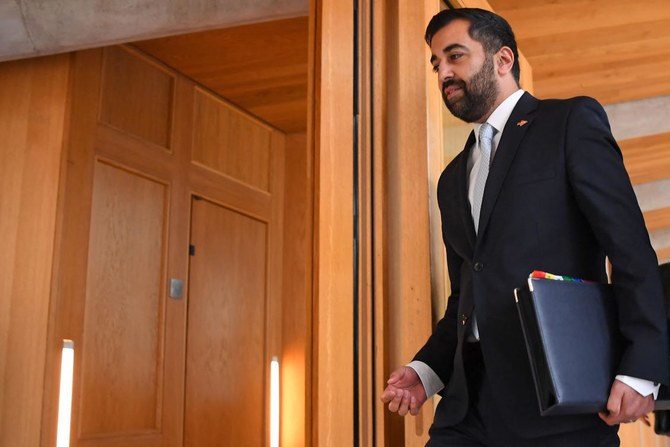
- Humza Yousaf said he would continue as first minister until a successor has been elected.
LONDON: Scotland’s First Minister Humza Yousaf resigned as leader of the Scottish National Party (SNP) on Monday and said he had ordered a contest be held to select a replacement.
“I’ve concluded that repairing our relationship across the political divide can only be done with someone else at the helm,” Yousaf said at a press conference in Edinburgh.
“I have therefore informed the SNP’s national secretary of my intention to stand down as party leader and ask that she commences a leadership contest for my replacement as soon as possible.”
He said he would continue as first minister until a successor has been elected.
Last week, Yousaf abruptly ended a power-sharing agreement between his Scottish National Party (SNP) and the Green Party, in the hopes that he could lead a minority government — but opposition parties have tabled a vote of no confidence.
The pro-independence SNP’s fortunes have faltered amid a funding scandal and the resignation of a party leader last year, while there has been infighting over how progressive its pitch should be as it seeks to woo back voters.
Just days ago, Yousaf said he was “quite confident” that he could win the no confidence vote called by political opponents, but by Monday, his offer of talks with other parties to try to shore up his minority government seemed to be faltering.
The leadership crisis and a second no-confidence vote against the Scottish government deepens problems faced by Yousaf’s Scottish National Party, which is losing popular support after 17 years of heading the Scottish Government.
Earlier this month, polling firm YouGov said the Labour Party had overtaken the SNP in voting intentions for a Westminster election, for the first time in a decade.
The leader of the Scottish Greens, Patrick Harvie, told BBC radio there was nothing Yousaf could say to persuade his party to support the first minister in the parliamentary confidence vote, leaving Yousaf with few options.
The vote is due to take place later this week.
A victory for Labour in Scotland in Britain’s next national election — expected later this year — would significantly bolster the party’s chances of taking power from Prime Minister Rishi Sunak’s Conservative Party.
If Yousaf loses, parliament would have 28 days to choose a new first minister before an election is forced.
Former SNP leader John Swinney has been approached by senior party figures to become an interim first minister in the event of Yousaf being forced from office, the Times newspaper said, adding that Swinney was reluctant to step up because of personal circumstances.
Yousaf, who previously held health and justice ministerial briefs in the Scottish Government, succeeded former SNP leader Nicola Sturgeon as first minister in March 2023.
She resigned last year and has since been embroiled in a party funding scandal with her husband, who was charged this month with embezzling funds. Both deny wrongdoing.
Global teacher shortage needs more than AI: WEF panelists
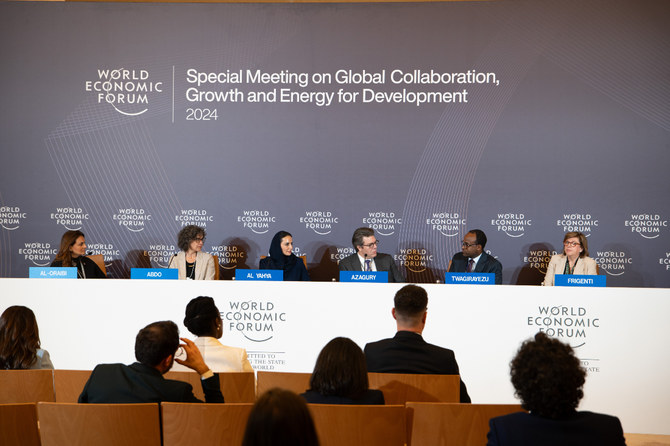
- Tailored solutions required for less-developed nations, says expert
- AI must complement education and training, changing of curricula
RIYADH: The global shortage of teachers will not be remedied solely through the use of artificial intelligence, according to education experts and decision-makers at the World Economic Forum’s Special Meeting in Riyadh.
“Teachers is the biggest problem at the moment for the education sector in low- and middle-income countries,” Laura Frigenti, chief of the Global Partnership for Education platform, told the panel on Sunday.
Gaspard Twagirayezu, Rwanda’s education minister, said that AI can revolutionize education and provide solutions for the global shortage of teachers.
“Of course, AI and technology are not going to replace teachers,” he added. “We can make sure that teachers are properly educated.”
“Here, we are trying to talk about how AI can help in producing education materials for the teachers so that we do not have all these expensive training sessions that we all have to go through.”
Stressing that AI can support teachers in the classroom, Twagirayezu explained that “teachers can be enabled to learn on their own using AI.”
Frigenti said that when it comes to harnessing the power of artificial intelligence in education, “there is not a kind of a one-size-fits-all technology that you can just import into one particular country.”
“You have to start from the conditions of that country and think in terms of a solution,” she continued. If there are no tailored solutions, this would “create a much bigger gap between a part of the world that can invest $8,000 per child per year in education and a part of the world that barely manages to invest $80.”
She added: “And that is going to create all sorts of socio-economic disparities, inequalities within society, (and) inequalities between the Global North and Global South.”
Frigenti added: “We integrate the improvements that technology and AI can add to the way in which the sector performs or is managed to a bigger way of thinking about the sector’s needs to transform, which includes a lot — changing the curricula (and) thinking about what you have to do for the (teachers) problem.”
The panel discussion, titled “Is Education Ready for AI,” featured speakers including Rudayna Abdo, founder and CEO of Thaki; Jack Azagury, group CEO of Accenture; and Deemah Al-Yahya, secretary-general of the Digital Cooperation Organization.
China’s robotic spacecraft headed for moon to carry payload from Pakistan
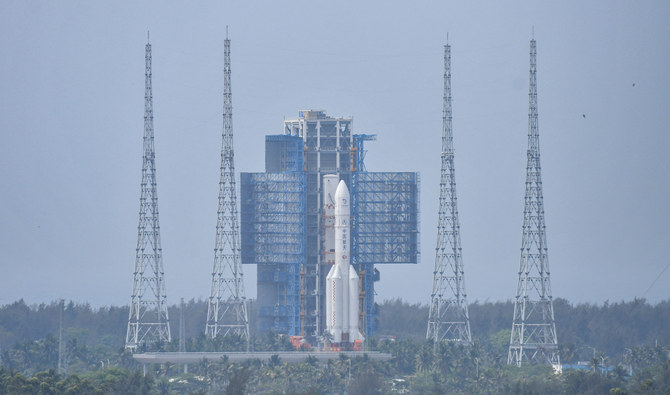
- China will send a robotic spacecraft in coming days on round trip to moon’s far side in first of three missions
- Chang’e-6 spacecraft will carry payloads from countries such as France, Italy, Sweden and Pakistan
BEIJING: China will send a robotic spacecraft in coming days on a round trip to the moon’s far side in the first of three technically demanding missions that will pave the way for an inaugural Chinese crewed landing and a base on the lunar south pole.
Since the first Chang’e mission in 2007, named after the mythical Chinese moon goddess, China has made leaps forward in its lunar exploration, narrowing the technological chasm with the United States and Russia.
In 2020, China brought back samples from the moon’s near side in the first sample retrieval in more than four decades, confirming for the first time it could safely return an uncrewed spacecraft to Earth from the lunar surface.
This week, China is expected to launch Chang’e-6 using the backup spacecraft from the 2020 mission, and collect soil and rocks from the side of the moon that permanently faces away from Earth.
With no direct line of sight with the Earth, Chang’e-6 must rely on a recently deployed relay satellite orbiting the moon during its 53-day mission, including a never-before attempted ascent from the moon’s “hidden” side on its return journey home.
The same relay satellite will support the uncrewed Chang’e-7 and 8 missions in 2026 and 2028, respectively, when China starts to explore the south pole for water and build a rudimentary outpost with Russia. China aims to put its astronauts on the moon by 2030.
Beijing’s polar plans have worried NASA, whose administrator, Bill Nelson, has repeatedly warned that China would claim any water resources as its own. Beijing says it remains committed to cooperation with all nations on building a “shared” future.
On Chang’e-6, China will carry payloads from France, Italy, Sweden and Pakistan, and on Chang’e-7, payloads from Russia, Switzerland and Thailand.
NASA is banned by US law from any collaboration, direct or indirect, with China.
Under the separate NASA-led Artemis program, US astronauts will land near the south pole in 2026, the first humans on the moon since 1972.
“International cooperation is key (to lunar exploration),” Clive Neal, professor of planetary geology at the University of Notre Dame, told Reuters. “It’s just that China and the US aren’t cooperating right now. I hope that will happen.”
SOUTH POLE AMBITIONS
Chang’e 6 will attempt to land on the northeastern side of the vast South Pole-Aitkin Basin, the oldest known impact crater in the solar system.
The southernmost landing ever was carried out in February by IM-1, a joint mission between NASA and the Texas-based private firm Intuitive Machines.
After touchdown at Malapert A, a site near the south pole that was believed to be relatively flat, the spacecraft tilted sharply to one side amid a host of technical problems, reflecting the high-risk nature of lunar landings.
The south pole has been described by scientists as the “golden belt” for lunar exploration.
Polar ice could sustain long-term research bases without relying on expensive resources transported from Earth. India’s Chandrayaan-1 launched in 2008 confirmed the existence of ice inside polar craters.
Chang’e-6’s sample return could also shed more light on the early evolution of the moon and the inner solar system.
The lack of volcanic activity on the moon’s far side means there are more craters not covered by ancient lava flows, preserving materials from the moon’s early formation.
So far, all lunar samples taken by the United States and the former Soviet Union in the 1970s and China in 2020 were from the moon’s near side, where volcanism had been far more active.
Chang’e-6, after a successful landing, will collect about 2 kilograms (4.4 pounds) of samples with a mechanical scoop and a drill.
“If successful, China’s Chang’e-6 mission would be a milestone-making event,” Leonard David, author of “Moon Rush: The New Space Race,” told Reuters. “The robotic reach to the Moon’s far side, and bringing specimens back to Earth, helps fill in the blanks about the still-murky origin of our Moon.”



